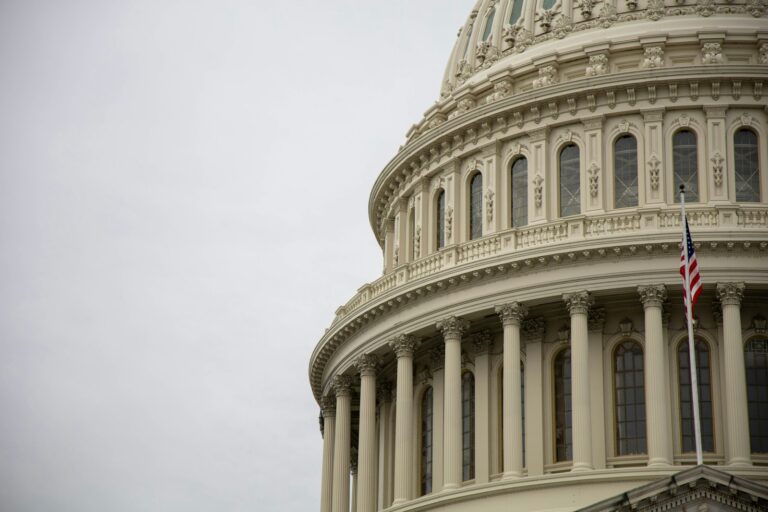Acer will soon raise prices on its desktop and laptop computers in the United States. The adjustment comes as a direct reaction to new import tariffs on Chinese goods. The company plans a 10 percent price increase to cover the extra cost brought on by these tariffs. This change will happen gradually over the coming weeks. Goods shipped before the tariff took effect will not see the price change immediately.
Acer explained that the new tariffs on Chinese products force the company to change its pricing model. The extra cost does not allow Acer to keep its current prices. The decision to raise prices was made after careful thought. The company feels that a modest 10 percent increase will accommodate the tariff cost. In addition, Acer wants to maintain its profit margins despite this change.
Overview of the Price Increase
Acer is a well-known manufacturer of personal computers. The company serves millions of users. It has earned a reputation for offering affordable and reliable devices. Now, Acer pays more for its products as a result of the new tariffs. The increase in prices is a direct response to a 10 percent tax on Chinese products. This tax applies to many electronics that are assembled or manufactured in China. As a result, Acer must adjust the cost of its computers sold in the United States.
The price hike will not be applied to all Acer products at once. Instead, the adjustment will be gradual. Items that left China before the tariffs will be sold at their original price. Acer is clear about its plan to update prices for products coming from China after the tariffs take hold. This planned shift in pricing should take only a few weeks from now. Consumers will soon notice the changes when they check the price tags for new computers.
Understanding the Tariffs and Their Effects
The tariffs imposed on goods from China have forced many companies to rethink their pricing. Tariffs act as additional taxes on products imported from certain countries. In this situation, the tariff adds an extra 10 percent cost to products from China. The move created a need for companies to cover these extra costs. Many firms, like Acer, have chosen to pass the tariff cost to their customers in the form of higher prices.
Tariffs have many effects across the economy. They can raise manufacturing costs and reduce profit margins. Companies must then decide whether to absorb the cost or shift it to consumers. Acer decided to pass the cost on to end users. This reactive measure is common for companies that depend on imported materials or products. It is a simple method to balance out the added expense caused by the tariff.
The Impact on American Consumers
Many American consumers rely on Acer computers for work and school. This price increase may affect those who purchase new devices. A higher price may discourage some buyers from choosing Acer products. This shift might force consumers to look for cheaper alternatives. However, the company believes that customers will understand the reason behind the increase.
Consumers appreciate clear communication from companies. Acer took care to explain why the prices had to change. They stressed that the tariff made it necessary to adjust the end user price. The company aims to remain transparent during this transition. Consumers can now prepare for a modest rise in cost when they shop for a new device. They may decide to delay their purchase until they see if any more changes occur.
How Acer Justifies the Price Hike
Acer uses a straightforward approach to adjust its prices. The company stated that the 10 percent increase is a natural response to the tariff. This choice was not made lightly. Acer decided that raising prices would help maintain its competitive edge. Despite the higher costs, the company still offers quality products. They believe that the extra expense is a fair way to balance the added tariff cost.
By passing on some of the cost to the customer, Acer hopes to continue providing value. The company maintains that the core quality and performance of its computers will remain high. Acer is confident in its design and manufacturing capabilities. The company regularly updates its products with the latest technology. Therefore, even with higher prices, consumers can expect good performance from Acer computers.
How the Change Affects the PC Market
This price adjustment by Acer might have a broader effect on the PC market. Other companies that import tech from China may also raise their prices. If many brands follow suit, the price of general computing products may rise. This change can lead to an overall increase in the cost of personal computers in the United States.
Competitors could decide to adjust their pricing as well. They might wait to see if Acer’s price hike affects sales. Some companies may try to minimize losses by absorbing the cost. Others might decide to pass on the tariff while keeping prices competitive. The coming weeks will reveal the full impact of these changes. The market response will show whether consumers are willing to pay more for their PCs.
The Call for Better Price Transparency
Consumers have always valued clear pricing when making a purchase. A clear explanation of price changes builds trust between a company and its buyers. Acer has taken steps to communicate its pricing strategy to the public. The company explained that the tariff cost is unavoidable. This open explanation helps consumers see why a 10 percent hike was the best option for staying profitable.
By offering simple reasons for the price changes, Acer hopes to avoid confusion. Many customers value honesty and clarity. They tend to react positively to companies that provide detailed reasons for cost adjustments. Transparent pricing builds long-term customer loyalty. Acer’s decision to provide this depth of information helps maintain trust. It also encourages consumers to choose Acer even if prices are slightly higher.
Options for Shoppers
Shoppers looking to avoid the extra costs may consider waiting for opportunities. Sales events and discounts might still make Acer products affordable. Consumers could also compare prices among different brands. Even with the tariff in place, there are often ways to find a good deal. Buyers who research their options can make informed decisions. They may find seasonal promotions that lower costs despite the tariff.
Some consumers prefer to shop for used or refurbished computers. Purchasing refurbished products from Acer or other trusted manufacturers might be a wise choice. This option often comes with a lower price tag. Additionally, many retailers offer financing plans that spread the cost over time. Exploring different purchasing strategies can help counter the effect of the tariff. This allows consumers to continue enjoying quality tech without overspending.
Future Concerns and Market Trends
The recent change in Acer’s pricing illustrates a larger trend in the industry. Tariffs often lead to significant price adjustments that touch many parts of the economy. As companies struggle to offset rising costs, consumers can expect more changes in price. This trend might affect many categories of goods beyond personal computers. The situation serves as a reminder that global economics have a direct impact on everyday life.
Market experts predict that other companies may follow Acer’s strategy soon. Rising costs in manufacturing and shipping can lead to similar price hikes across several industries. Consumers should remain aware of these trends when planning purchases. Short-term changes may impact long-term expenses over the next few years. Companies must continue to adjust their pricing strategies to cover unforeseen cost increases.
Preparing for the Economic Future
Many people wonder how these changes will affect their budgets. An increase of 10 percent may seem small, but it adds up over time. It is important for consumers to watch their spending closely. Planning and budgeting carefully can help manage these new costs. Learning more about the reasons behind price changes can enable better financial decisions. Now is a good time for shoppers to reexamine their priorities and decide where their money goes.
Parents and students should consider the timing of their purchases. For families on a tight budget, even a slight increase in cost can have a noticeable effect. It is wise to shop carefully and look for deals. Making informed buy choices can help ease the strain when prices go up. Staying informed about economic trends can also help consumers anticipate future changes.
Advice for Students and Young Shoppers
Young people today rely on computers for studying, gaming, and staying connected. Acer computers have become a popular choice in schools and at home. A rise in price will affect students who need reliable devices for schoolwork. However, understanding the reasons for rising costs is important. Students and parents can look for alternative brands or refurbished models. Research will help all groups find the best deals possible.
Advice for this group includes keeping an eye on seasonal promotions and discounts. Many retailers offer back-to-school sales and holiday discounts. Young buyers who plan ahead might not feel the full impact of the tariff-induced price increase. Planning purchases during times of sale can reduce the impact of higher prices. Being proactive about shopping can help everyone manage costs more effectively.
Looking Ahead to Future Developments
The next few weeks will bring more news about pricing changes. Consumers will begin to see the price increases on store shelves and online. It is important to keep monitoring the situation as more products are affected. Acer and other companies plan to adjust their pricing over time. Paying attention to these changes can give consumers a better understanding of how tariffs shape the tech market.
One might expect that the current tariff situation will not last forever. Economic policies change, which can lead to a reversal or modification of tariffs. Acer and other companies might adjust their prices again when policies change. These fluctuations remind consumers that the market can be unpredictable. Such news encourages shoppers to stay updated with trends and news in the technology world. By staying informed, one will be ready for any future changes.
How These Changes Highlight Global Trade
The recent price adjustments remind us of the important role global trade plays in our lives. Policies set by governments in one country directly impact prices in another. Acer’s method of dealing with tariffs shows the connection between business operations and political decisions. Companies worldwide must adapt when new economic policies arise. These events reveal how global politics influence everyday products.
Consumers now see that external factors such as tariffs can change the price they pay for a product. This understanding encourages more thoughtful shopping and budgeting. When consumers are aware of what causes price increases, they can adjust their purchasing habits accordingly. The discussion about global trade and tariffs opens the door for more public interest in economic policies. In the end, everyone gains a better insight into how interconnected our world truly is.
Taking a Closer Look at Acer’s Strategy
Acer faces difficulties like many other companies today. The firm works hard to deliver quality products despite the challenges of global trade. Their decision to raise prices is a direct response to rising costs. This strategy shows Acer’s commitment to staying competitive and profitable. The company is transparent about its decision-making process. They believe that customers will understand the need to adjust prices.
Acer takes pride in offering dependable computing solutions. The company continues to invest in innovation and customer support. Even with the price hike, Acer remains a top choice for many users. The decision to pass on the tariff cost was not taken lightly. Acer worked through many options before deciding that the price increase was necessary. This careful analysis reinforces the idea that quality products always come at an evolving cost.
Final Thoughts on the Price Increase
The decision by Acer to raise the prices of its PCs by 10 percent is significant. It is a direct effect of the tariffs placed on Chinese goods. The change is not abrupt, and customers will notice the differences gradually. Acer took a clear path away from absorbing extra costs. Instead, the company chose to pass the tariff expense directly to its users.
Young people and students must stay alert when making new purchases. The market is full of opportunities and challenges. In these times, knowledge is power. Understanding the reasons behind cost changes helps all buyers manage their budgets better. Tracking news about these changes can provide extra insight into future trends.
This news provides a learning moment for everyone who uses technology. It teaches that global events can impact local prices. Consumers get a firsthand look at how a global economy works. Acer’s clear communication lets customers know what to expect. Everyone can benefit from knowing that even big companies face challenges in a changing world.
In conclusion, the upcoming price increase from Acer is both a response to tariffs and a cautionary tale on global trade. The situation reminds shoppers to stay informed and plan carefully. It encourages transparency in business practices. Moving forward, consumers should monitor prices and seek the best value for their money. With clear explanations and sound strategies, Acer aims to provide quality products despite the new challenges. This approach helps build trust and ensures that customers know exactly why prices have risen.










